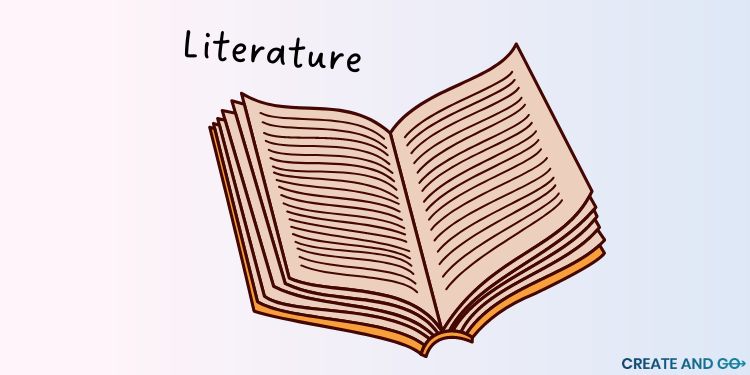Writing is an art, and like any other form of art, it requires a good understanding of various techniques to create a masterpiece. One such literary technique that writers often use to add emphasis and impact to their writing is polysyndeton.
This literary device involves the use of multiple conjunctions in a sentence to create a sense of urgency and add emphasis to the connected ideas or phrases.
In this article, we will explore the definition of polysyndeton, along with 28 polysyndeton examples in different forms of writing, and understand how it can be used effectively to add emphasis to your writing.
What is Polysyndeton?

Before we dive into the examples, let’s quickly understand what polysyndeton means. Polysyndeton is derived from the Greek words “poly” which means many and “syndetos” which means bound together.
In simple terms, it is the use of multiple conjunctions (such as “and”, “or”, “but”) in a sentence instead of using commas to separate the connected ideas or phrases.
Here is a basic example of polysyndeton:
“The sun rose and birds sang and the trees rustled in the gentle breeze.”
This sentence uses polysyndeton to create a sense of peacefulness and add emphasis to each element of nature.
It’s also the opposite of asyndeton, which means the omission of conjunctions.
Polysyndeton is often used in both prose and poetry to create a sense of urgency, emphasize a particular idea or emotion, and make a statement more memorable.
How to Use Polysyndeton in Your Writing
While polysyndeton can be a powerful tool to add emphasis to your writing, it’s essential to use it sparingly and purposefully. Here are some tips on how you can effectively use polysyndeton in your writing:
- Use it sparingly: While polysyndeton can be a powerful tool, too much of it can make your writing seem repetitive and lose its impact. Use it strategically and sparingly.
- Match the tone: It can add a sense of urgency and chaos to your writing. Make sure it matches the emotion and tone you want to convey.
- Use it in lists: Polysyndeton is often used in lists to create a rhythmic effect and emphasize each item equally.
- Create contrast: It can also be used to create contrast and make a statement more impactful. For example, using “but” repeatedly in a sentence can create a sense of contradiction and tension.
- Use it to create rhythm: Polysyndeton can also be used to create a rhythmic effect and make the writing more memorable. It works especially well in poetry.
Now that we understand how polysyndeton works, let’s take a look at some examples of its usage in various forms of writing.
28 Polysyndeton Examples
Now that we understand how polysyndeton works let’s look at some examples of its use in different forms of writing.
Polysyndeton in Literature

- “And the clinking of their weapons and the shouting grew still closer, till suddenly it burst into flame as two great hosts crashed together.” – J.R.R Tolkien, The Fellowship of the Ring.
- “I love her so much that every day I wake up and see her beautiful face, and I know how lucky I am to have her in my life, and I thank the stars for bringing her to me.” – Nicholas Sparks, The Notebook.
- “My bounty is as boundless as the sea, my love as deep; the more I give to thee, the more I have, for both are infinite.” – Romeo & Juliet, William Shakespeare
- “The captain stood up with his arms raised high and called out to them all again and again.” – Ernest Hemingway, The Old Man and The Sea.
Polysyndeton Examples in Speeches

- “I will fight against it through faith and prayer and any other means necessary.” – Nelson Mandela, Rivonia Trial Speech.
- “With faith and hope and courage, let us brave once more the icy currents.” – John F. Kennedy, Inaugural Address.
- “We shall fight on the beaches and we shall fight on the landing grounds, and we shall fight in the fields and in the streets.” – Winston Churchill, “We Shall Fight on the Beaches” Speech.
- “We must be ready to break free and change our nation, and do it now, lest we betray our children and their children.” – Lyndon B. Johnson, Address at Howard University.
Polysyndeton in Advertising

- “This laptop is slim and lightweight and powerful.”
- “Eat fresh and bold and healthy with our new range of salads.”
- “She is strong and confident and unstoppable.
- “Sleek and stylish but affordable.”
Polysyndeton Examples in TV and Film

- “This is my house and you will not mess it up and we will party all night long!” – The Office
- “I need to find the key and open the door and get out of here.” – Breaking Bad
- “We can stay up late and trade manly stories, and in the morning, I’m making waffles!” – Shrek
- “I fought and I bled and I cried, but today, I win.” – Rocky
Polysyndeton in Everyday Language

- “I need to go to the store and buy milk and bread and cheese.”
- “He kept asking me questions like where I was from and what my hobbies were and how old I was.”
- “I was late and my car broke down and it started raining.”
- “She cooked and cleaned and took care of the kids all day long.”
Examples of Polysyndeton in Quotes and Proverbs

- “We work together and we play together and we thrive together.” – Sheryl Sandberg
- “Hate and love and fear have conquering power.” – Friedrich Nietzsche
- “We lived and laughed and loved and left.” – James Joyce
- “You are braver than you believe and stronger than you seem and smarter than you think.” – A.A Milne, Winnie-the-Pooh
Polysyndeton Examples in Song Lyrics

- “I got just one life in a world that keeps on pushin’ me around, but I’ll stand my ground and I won’t back down” – Tom Petty
- “And I don’t think that I’ll see her again, but we shared a moment that will last ’til the end” – James Blunt, You’re Beautiful
- “I need you tonight, and I need you more than ever, and if you’ll only hold me tight, we’ll be holding on forever.” – Bonnie Tyler, Total Eclipse of the Heart
- “I am flesh and I am bone, rise up, ting ting, like glitter and gold” – Barns Courtney, Glitter & Gold
Other Literary Devices to Explore
Now that we have explored some examples of polysyndeton, here are a few other literary techniques you can explore to improve your writing:
- Alliteration: The repetition of the same sound at the beginning of adjacent or closely connected words.
- Hyperbole: An exaggerated statement used for emphasis or effect.
- Personification: Giving human qualities to non-human objects or beings.
- Onomatopoeia: The use of words that imitate the sound they represent.
- Imagery: Descriptive language that appeals to the senses and creates a mental image for the reader.
- Chiasmus: A figure of speech in which words are repeated in the opposite order to emphasize something or to create a contrast.
- Anaphora: The repetition of a word or phrase at the beginning of successive clauses or sentences.
- Synecdoche: A figure of speech in which a part is used to represent the whole.
- Irony: The use of words to convey the opposite meaning or an unexpected outcome.
By incorporating these literary devices into your writing, you can add depth and creativity to your work. Just remember to use them sparingly and purposefully to make the most impact.
FAQs About Polysyndeton
Key Takeaways for Polysyndeton Examples
In conclusion, the use of polysyndeton is a powerful tool in writing. It adds rhythm, emphasis, and can be used to create a dramatic effect.
The examples provided illustrate how this literary technique is employed in everyday language, quotes, proverbs, and song lyrics.
Along with other literary devices such as alliteration, hyperbole, personification, and imagery, polysyndeton can make your writing more engaging and impactful.
Remember, the aim is to enhance your message, not complicate it. Hence, use these tools wisely and in moderation.
Keep exploring and practicing to master the art of effective writing!